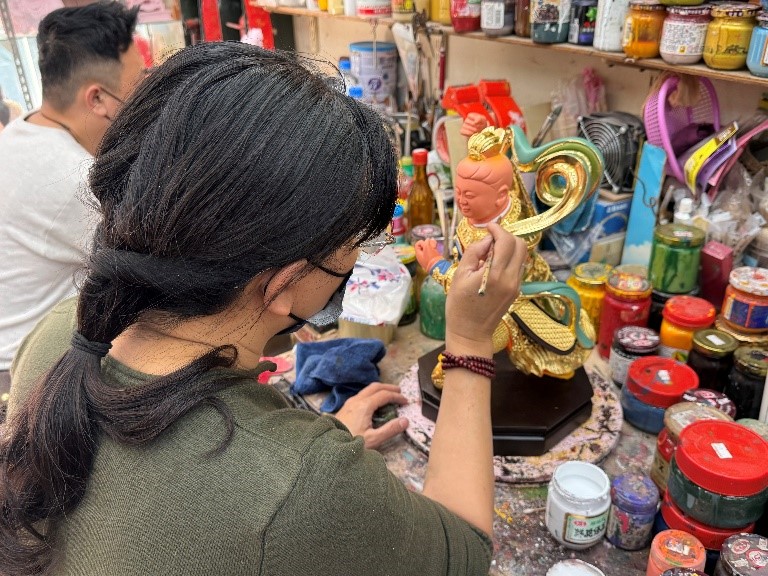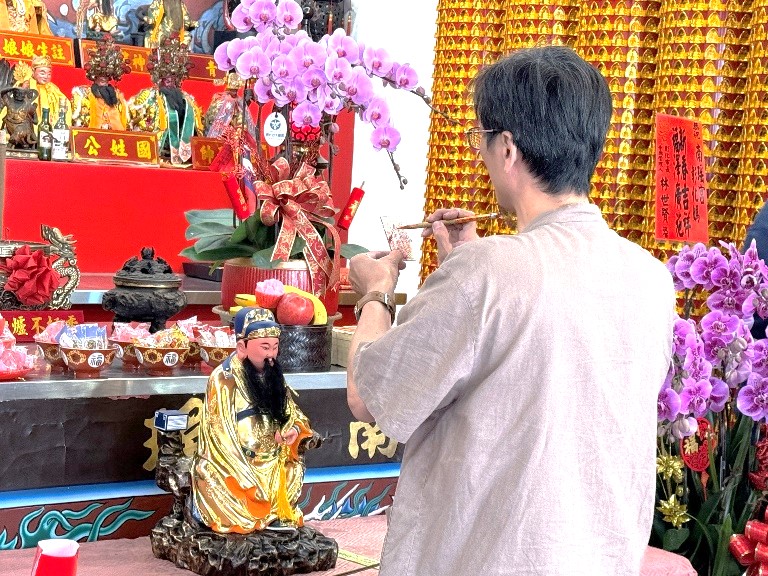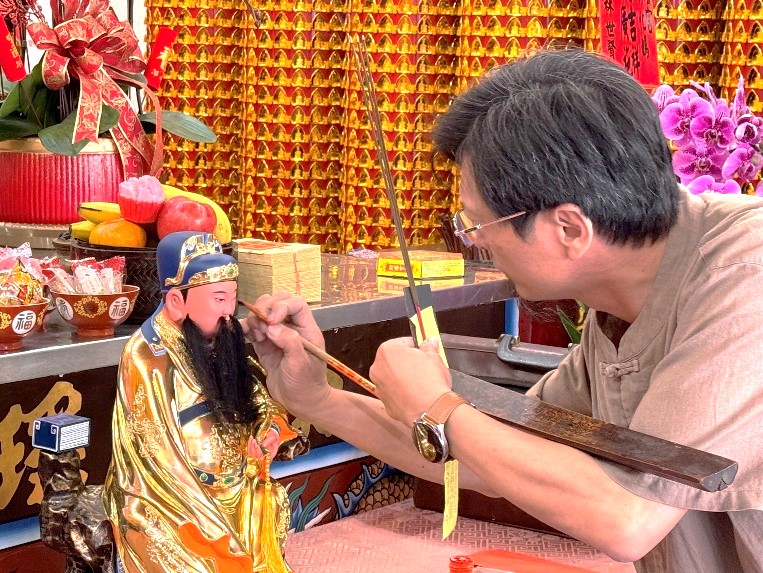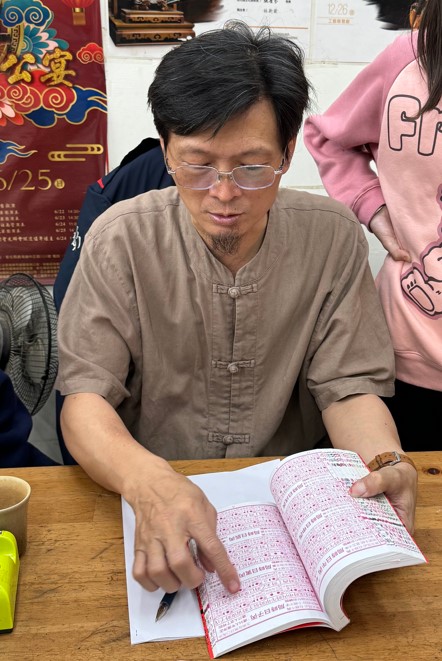Taboos of statue sprucing
In the early days, the art of statue sprucing would not arbitrarily passed down to outsiders. It was never easy for outsiders to understand the secrets, and this industry also had its own unique taboos.
Taboo against female participation
1.Taboos of statue sprucing
In the early days, all the masters engaging in statue sprucing were men, because women were excluded from entering the inner hall of the temple and could not climb onto the sacred table. In addition to the concept of sexism, it is also due to the fact that girls have their menstrual periods, which might disrespect the gods. Until now, there are still some masters who are unwilling to allow women to engage in statue sprucing and believe that it is more respectful to the gods. However, owing to the popularization of gender equality, this taboo has gradually been relaxed, and women can engage in this work as long as they are not during their menstrual period. Master A-fa said that there are 7 to 8 statue sprucing masters in his workshop, and three of them are women.

Now women can also participate in the work.

Master A-fa’s wife also works together.
2.Materials to be used after the initiation of the use of ax
The statue sprucing materials is either wood or soil. When the material has been cleaned or the use of ax hasbeen initiated, both male and female masters are advised not to sit on it as much as possible to show respect. If a master intends to change the material after the initiation of the use of ax, he/she must “withdraw from Luban.” This step is extremely important, because Luban is the founder of the statue sprucing. After inviting Luban to initiate the use of ax, if a master decides to stop his/her work, he/she has to ask the Luban spirit on the materials that have been used for the initiation of the use of ax back to the heaven, so as not to be disrespectful to the gods. The ax withdrawal ceremony has existed since the Sui and Tang Dynasties. At present, the evidence has confirmed that this ceremony did exist during the Ming and Qing Dynasties.
3.Following rules and rituals
From the beginning of making a statue to the completion of its placement on the altar, not only statue sprucing craftsmen are needed, but also mages, numerologists and Feng Shui masters are needed. For example, during the initiation of the use of ax, it is necessary to ask a mage to go through the procedures of cleaning the wood, and it is also necessary to ask the mage to set a date for the ceremony. Upon completion of the creation of the statue, it is necessary to ask a mage to participate in the eye-opening and statue placement. In the meanwhile, a numerologist is required to calculate the date suitable for the god; a Feng Shui master is required to determine the location. In summary, different professionals are required to take care of each step. In the early days of statue sprucing, masters usually had to cover all professions. Master A-fa also learned a full set of procedures from his master, but now most of the procedures are handled by respective professionals. It is rare to find a traditional statue sprucing master like Master A-fa who plays all the professional roles, including craftsman, mage, numerologist, and Feng Shui master.

Master A-fa as a mage.

The mage is performing the eye-opening ceremony.
4.Taboo against Chinese zodiac
uring a ceremony, in general, there is a taboo against Chinese zodiac. In addition, those holding funerals at home should not participate in the ceremony. The taboo against Chinese zodiac is usually determined based on the records in the lunar calendar and varies from day to day. Although there is a taboo against Chinese zodiac, if all 12 zodiac signs can be present at the ceremony, this taboo will be broken and the ceremony is no longer bound by it. However, if the person of the tabooed zodiac sign only watches the ceremony from a distance and does not touch the statue at a close distance, the taboo is actually not that strict. Only those who need to be in close contact with god statue, temple officials or staff need to avoid this taboo.

Master A-fa use the lunar calendar to check the taboo against Chinese zodiac.






.png)

